If you’ve ever felt a great attraction and feeling for the Sun, or Karna in the Mahabharata, this could be the mantra for you.
It occurs in the Yuddha Kanda of Valmiki Ramayan. We’ll take around 10 verses a time.
Disclaimer – This piece of writing is for my own reference and for a word to word meaning and translation with the background story, you can refer to this book Aditya Hrdayam: With the Commentary Tattvaprakasika in this link or this website here.
You can listen to it here.
If you’ve already read Aditya Hrdayam and know a bit of Advaita Vedanta, this piece of writing may help you with deeper insights into the meaning of the shlokas.
Invocation. (optional)

Verse 1
ततो युद्ध परिश्रान्तं समरे चिन्तयास्थितम् ।
रावणं चाग्रतो दृष्ट्वा युद्धाय समुपस्थितम् ॥ 1
Important words –
Tatah – Whenever Valmiki has something important to begin, he used Tatah.
Ram’s birth, Sita’a marriage and Sundarkanda all begin with tatah.
The form of Tatah as a word in Sanskrit language does not change. ( avyaya)
Whenever philosophical significance comes in, he uses tatah.
TaKara is auspicious itself. Gayatri begins with it.
Chintaya-stitham
In Ram avatara, he wants to live like a human whose Dashratha’s son, whereas in Krishna avatar he shows off his Brahmatvam.
We’re often found brooding over life’s problems and we generally have this notion that we can always solve our problems on our own, by our thinking, the same thinking that got us into this mess.
Sometimes we can crack the problem ourselves but kabhi kabaar enemy aisa hota hai ki jann ka peecha hee na chodhe. ( the six enemies)
Constantly battling we get tired and want to catch a break.
Parishrantam – extremely exhausted
What to do?
Verse 2
दैवतैश्च समागम्य द्रष्टुमभ्यागतो रणम् ।
उपागम्याब्रवीद्रामं अगस्त्यो भगवान् ऋषिः ॥ 2
Lord sends in divine help in the form of a Jnani ( Sage Agastya) , seeing our plight.
(Introduction of Guru)
Abhagyata – comes forward (singular)
It’s important to remember that a Jnani is the same as the Lord for they are one.
jñānī tvātmaiva me matam(BG 7.18)
Hence Agastya is referred to as Bhagvaan. A knower of Brahman becomes Brahman – says the Mundaka upanishad (3-2-9)
Lord Agastya was a rishi, who saw(drashtva) Lord Rama exhausted through his ashta- siddhi. He spoke (abraveet).
Verse 3
राम राम महाबाहो शृणु गुह्यं सनातनम् ।
येन सर्वानरीन् वत्स समरे विजयिष्यसि ॥ 3
Rama is repeated twice as if the Lord is anxious to teach this stotra to his devotee.
My child, you don’t need to go on brooding and struggle so much in the battle (of life).
Thinking of Ishvara, a person goes towards Ishwara, the one eternally free.

Mahabaho and vatsa are terms of endearment.
O Mahabaho, not all problems of life can be resolved by muscles and mental strength.
Let me give you a mantra, to invoke the Lord, it’s a secret, it’s eternal(Sanatanam)
Yena – by which
Sarvan – every/all
Arin – enemy (like tendencies and modifications of the mind which are harmful for spiritual growth)
Samare – Battlefield
Sages knew that problems in life required both Jnana(knowledge) and Vijñāna(realization). A person can get knowledge from Shruti but realization requires the grace of Ishvara and sadhana/constant religious steadfastness is the only way to get his grace.
Some might say – why give a mantra in the middle of battlefield?
It’s because the science of mantras helps a seeker in his daily battles of life.
Following is a special verse from the Uddhava Gita in which Sri Krishna enlists 10 things that affect a person’s character /personality –

Gita and Aditya Hrdayam are not given to renunciates but people in the middle of the battlefield of life.
Verse 4
आदित्यहृदयं पुण्यं सर्वशत्रु-विनाशनम् ।
जयावहं जपेन्नित्यं अक्षय्यं परमं शिवम् ॥ 4
It was also key to draw Ram’s full interest so Agastya used the word Sarvashatruvinashanam, because his immediate problem was to defeat Ravana.
In a way, worshipping the Lord not only helps us conquer inner weaknesses but also outer worldly problems.
Rich inner world makes problems in the outer world like a piece of cake.
But don’t worry the Lord is not unaware of your daily struggles. He helped me found a job and once my phone was stolen, the thief returned the phone by the Lord’s grace. O I grew up in an abusive household, the Lord pulled me away from it by making a powerful busy – all – the – time businessman fly all the way to my town and shifted me into my own place. O once I desperately wanted a girlfriend, that too Lord brought my way 😂
I could go on with the examples but you get the idea.
Agastya introduces the name of the hymn in this very verse.
Aditya Hridayam
The Supreme Brahman has two addresses – two altars – one is the Sun and second is in the cave of your heart. (meaning the mind).

Appreciating the Lord in your heart requires Vedanta and is tougher(though you can always do that through kindness and humility towards all beings.)

Greater is the difficulty for those whose minds are set on realisation of the unmanifest (Nirguna Brahman through the mind), because what cannot be objectified is reached by difficulty for those identified with the body. – says Krishna in the 12th chapter of the Bhagavad Gīta.
So why not invoke his presence through the second altar – the Sun, which is so easily present in front of our eyes.
It’s punyam(happiness).
Whoever recites it regularly(nitya), will benefit much more. Nitya – yukta is one of the qualities Lord describes in his best devotee.

Therefore be regular.
Whoever steadfastly keeps his mind on Brahman, the reality manifesting in the heart of every living being and the Sun, will win the battle of life and constantly get closer to Supreme (param) abode of auspiciousness which is imperishable. (akshayam).
What’s auspicious is only something that doesn’t go through change(kshaya).
Verse 5
सर्वमङ्गल-माङ्गल्यं सर्वपाप-प्रणाशनम् ।
चिन्ताशोक-प्रशमनं आयुर्वर्धनमुत्तमम् ॥ 5
Agastya ji further glorifying the stotra and telling it’s benefits.
Prayer takes away our cinta(for future problems) and shoka(trauma of past problems) through the power of faith, changing our karma and working on the mind.
People who dwells upon Brahman in the form of the Sun, are blessed by it as it is the eternal source of peace/auspiciousness(maangalyam)
Nama namin ek.
Sunlight sanctifies your wet clothes and all the places on Earth, so does remembering the Atman for the mind.
Remembering that which is beyond punya and papa, will rid of your papams. Will rid you of all Chinta.
Maa Sarada always said that japa reduces the bad effects of karma. Japa also lays the ground for realisation in which sins and merit don’t matter.
It’s capable of destroying all sins.(sarva-papa-pranashnam)
In childhood, I once wanted to suicide thinking I committed a terrible crime. But Ishvara’s grace is not discriminative, it shines on saints and sinners alike.

Good good, bad bad, none escape the law.
But Ishvara’s worshippers have a cheat code.
Ayurvardanam – the Sun has always made me feel healthier. In the midst of the heat of Lucknow summers where people craved AC, and felt Sunlight burned their skin, it made me feel stronger inside.
Your life span will increase so that you may practice Yoga (union with the Lord) as much as possible and get closer to Me.
Totapuri Maharaj lived for 250 years.
Verse 6
रश्मिमन्तं समुद्यन्तं देवासुर नमस्कृतम् ।
पूजयस्व विवस्वन्तं भास्करं भुवनेश्वरम् ॥ 6
Atman is beyond thought, but it’s saguna(with attribute) aspect in the Sun isn’t. It’s right there in front of us.
Pujayasva– Worship it.
A sage tells an Avatara to worship Vivasvaan(The Sun), what to talk of us?
Sri Krishna himself instructed the same in the sixth chapter of Uddhava Gita, regarding his centres of worship –


Worship/bhakthi is defined as constant unbroken remembrance of the Lord.
Nama-sankirtan helps with exactly that.
When you praise someone, you praise their attributes.
O Sarthak, that boy has discriminative eyes.
So you used three words/attributes to describe Sarthak. Similarly this verse starts reciting his attributes.
Bhaskaram, Rashmi-mantam and Samudyantam are the attributes of the Sun, the altar of our worship.
Devasuranamaskrtam – This attribute is Vedantic(adhyatmic). The Supreme Consciousness supports both our good thoughts and our bad thoughts. Even the Sun, it is equally important to both Bhaktas (for worship, since ancient times in Sandhya Vandana, etc) and the materialistic people( attached to action in the world, waiting for the Sun to rise so they can pursue kama-kanchana)
Bhuvan-Ishwara – Like Brahman, Sun alone is the true support of life, of the Universe. Without it, there can be no life possible.
Hence it’s Ishwara.
Verse 7
सर्वदेवात्मको ह्येष तेजस्वी रश्मिभावनः ।
एष देवासुर-गणान् लोकान् पाति गभस्तिभिः ॥ 7
Sarvadeva-atmako-hyesha – All Gods are verily He.
This is simple Math actually. Superset contains all subsets.
Suppose you worship a tree, you have automatically worshipped the leaves.
Similarly worshipping Brahman in any one aspect, you get the fruit of worshipping him in all other aspects.
Mother Parvati took so much care of Tulsidas ji who was a Rama bhakta. Lord Shiva appeared to Swamiji whose Ishta is Mother Goddess. Ramakrishna worshipped Christ and Allah even after the vision of the Mother Goddess, putting her pictures aside when he was worshipping the Lord in that aspect.
And he finally said – Jato mat tato pat
Tejasvi – Radiant/Brilliant.
Rashmi-bhavanah
He manifests [his Fiery Energy] as Rays
रश्मि (Rashmi) = Ray
भावन (Bhaavana) = Causing to be, Effecting, Producing, Manifesting.
The Sun is thousands of miles away from the Earth. I often forget my cousins who live right in the next colony, then how come we know Lord Aditya who is so far.
Only through his rays.
You do not know the presence of the Sun apart from its rays. Your eyes can see only through light. You know Him only through its rays.
Similarly Brahman’s presence can also be inferred only by its reflection in the mind (Cidabhasa). You can see it explained here.

Vedanta is easy to learn. Just start seeing Swami Sarvapriyananda lectures on YouTube.
You can start with his series Introduction to Vedanta
Pati – common word found in many hymns. – means protects.
Lokan paati gabhastibhi
Lord Sun protects both the Lokas of the Devas and the Asuras by his rays. He himself doesn’t need to be there for this. Just his rays are enough.
Photosynthesis in plants which we all read in science in our school (and forgot 😂) is the basis of all plant life, and uses nothing but the light energy of the Sun.
Similarly Brahman sustains the world, our minds, both our good and evil thoughts just by his mere reflection, he isn’t manifested.
He’s samadrg. He’s unperturbed between good and bad. The number one quality of a sage is they are beyond Guna-dosha-bhak.

They don’t discriminate between the good of the good or by the bad of the bad.
Swamiji too says he sees nothing but Mother Goddess in people.
Ah the joy of seeing the scriptures come alive in a person.
They become like God Himself.
Verse 8/9
एष ब्रह्मा च विष्णुश्च शिवः स्कन्दः प्रजापतिः ।
महेन्द्रो धनदः कालो यमः सोमो ह्यपां पतिः ॥ 8
पितरो वसवः साध्या ह्यश्विनौ मरुतो मनुः ।
वायुर्वह्निः प्रजाप्राणः ऋतुकर्ता प्रभाकरः ॥ 9
Worship the Atman in one altar is equal to worshipping him in all other altars.
In Hinduism, Ishwara is often worshipped in a form which is readily available for our perception as a part of Nature.
But still people often experience FOMO. I have worshipped the Sun but I wonder about the worship of Lord Shiva. What about Devi? What about Ganesha.
You see, this verse says, all Gods are verily He, and are equally worshipped in the Sun.
Hence the concept of Ishta.
Hindus want to concentrate their whole minds on seeing the Divinity in any one thing. Quite often it leads to fanaticism (my God is better than yours)
But soon with practice it turns into Para – Bhakti.
So in these verses, all the Vedic Gods are called upon as the Sun, to let us know that Hinduism is not poly theism.
Worshipping Brahman, you worship all, since they are all present in Brahman.

So don’t have FOMO.
Vishnu sustains, so does Lord Sun.
Shiva destroys, so does Lord Sun.
Brahma creates, and so does the Sun.
Skandah – God of energy.
Rtukrta – Raimaker 😂 or the maker of seasons.
His gati alone is the cause of winters, summers and other seasons.
Kalo – Lord Sun’s gati alone causes time.
Yama – in Hinduism, death is not seen as inauspicious.
Death is often a fresh start for many.

Vayuh – click here
Manu – is talked about as the son of Sun, who is verily the progenitor of all life forms. It is Sun alone who taught the ancient Yoga to Manu.

Dhandah – Sun alone creates wealth in the form of resources in nature like crop(agriculture), oil business, etc.
Health and vigor in the body is wealth begotten from the Sun.
Praja – prana – he’s literally the life of the planet. Isn’t he worshipable? If we can worship God in sculptures, why not the Sun? But har ek ka apna apna bhav hai.
That’s it for today. Rest of the shlokas for another time.
| Om Adityah Namah |


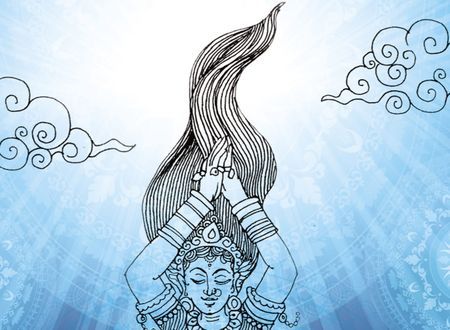
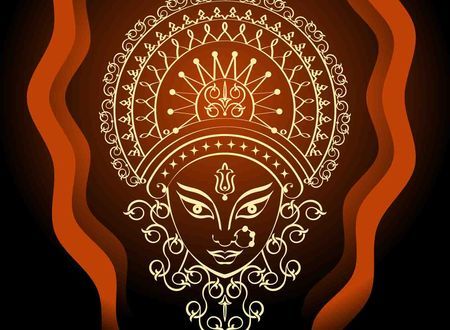
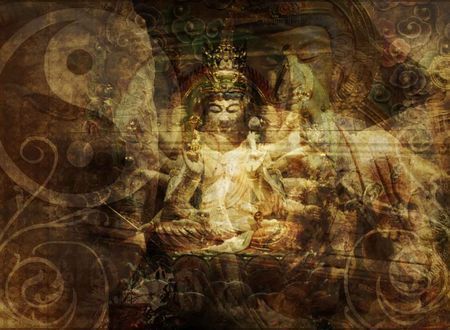
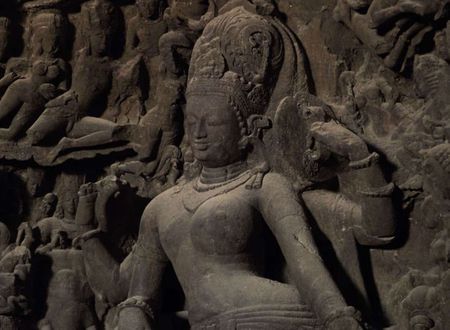
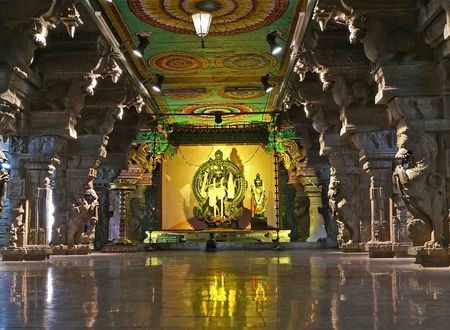


Comments & Discussion
7 COMMENTS
Please login to read members' comments and participate in the discussion.